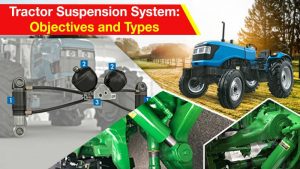Modern civilizations and contemporary life may not have been possible without agriculture. Over time, the agricultural sector became the most dominant land user on the planet, significantly impacting the environment as a feeder of a booming population and a transformer of the natural habitats of many species.
When agriculture is done right, farmers in India could bring about many positive environmental impacts of agriculture that may enrich local biodiversity and boost vital ecosystems.
Positive Impacts of Agriculture on the Environment
Best Inspiration for People
Farmers have formed and kept up the unique look of rustic regions for centuries. agriculture makes a brilliant assortment of scenes, going from lovely blooming plantations and grape plantations to fields of brilliant wheat.
What’s more, it isn’t just the 45.7% of individuals worldwide that live in the rural that appreciate it, yet the remainder of the populace living in metropolitan regions appreciate agrarian scenes as a spot to reconnect with nature.
Preservation of Environment
Agriculture helps save significant biological systems. Fields give territory to an extraordinary number of creatures and local plants.
Presently a day these regions have been predominantly cleared out because of the current turn of events or concentrated farming.
In the rustic region, they exist as a result of the low affected method of cultivating an occasional brushing of animals.
Habitats Creation by Agriculture
Agriculture frameworks that work in amicability with nature like natural, permaculture, or biodynamic cultivating make assorted common territories.
A few animal types even expanded in number because of rural exercises. Keeping up land for agriculture use can likewise keep that land from being urbanized, in regions where local species experience issues discovering unique natural surroundings.
Agriculture with Environmental Progression
A few animal types need early successional natural surroundings, like grasslands, to flourish.
These living spaces are profoundly fleeting and can be by enthusiastically developing grasses, forbs, bushes, and trees yet which need aggravation to be kept up.
Open glade natural surroundings, which fall under this class, and local wildflowers are significant for some, pollinators like a few birds and honeybees. Without farmland, progression may be purposely hampered by the board exercises.
Agriculture Enhance Soil Fertility
One of the critical highlights of sustainable agriculture is the attention to the health of soils. Practices, for example, crop turn, cover cropping, organic farming, improve soil richness normally, and can even accelerate the interaction of new soil development.
As well as forestalling the depletion of soils, and hence, getting steady yields, these practices increment biodiversity of great soil fauna and verdure.
Soils wealthy in the natural matter and prospering with life likewise contain more noteworthy groupings of the regular adversaries of bugs, consequently supporting the development of stronger harvests.
Sequestering of Carbon by Agriculture
Similarly, as with some other plants, developing yields – particularly enduring polyculture frameworks utilized in permaculture cultivating and agroforestry – add oxygen to the air, as plants photosynthesize and eliminate carbon dioxide from the air.
The more extravagant the plant cover is, the more it utilizes carbon dioxide to help its life capacities.
Carbon is likewise sequestered by soils, which have a characteristic carbon conveying limit that increments when soils are made do with the least unsettling influence.
Strangely, carbon can be decreased even by animal farming. In rotational grazing frameworks, livestock help to store carbon in the soil.
Through grazing for a restricted time frame around there, biodiversity of local plants increments since grasses can regrow similarly without one animal type dominating and getting obtrusive.
Minimization of Soil Erosion with Agriculture
Loss of soils is probably the greatest danger to our prosperity, and intensive agribusiness with monoculture fields is known to be one of its fundamental contributors.
Farmers, be that as it may, can invert this harm. In lasting frameworks, vegetation with profound roots assists with holding the soil together and forestalls soil erosion.
This is particularly the situation when farmers have developed swales and different kinds of earthworks that assistance to balance out steep inclines, or while applying methods with low soil unsettling influence like zero – tillage.
Agriculture Has A Part in The Water Cycle
Plants and trees in agrarian frameworks help to hold and add water to underground springs.
This interaction is best when the harvests being developed are perennials that keep on developing each year and have profoundly grounded root frameworks.
An effective methodology that has been applied as of now by our precursors is to plant trees, shrubberies, and grasses combined as one.
By joining plants of various sizes, soils are uniformly covered and can withstand heavy rains without being washed away.
This improves soil structure and empowers water invasion. When water enters the soil, it goes through various soil layers constantly disposing of contaminations until it comes to groundwater repositories entirely spotless and all right for us to drink.
Here are some positive impacts of agriculture on the environment, similarly it has some negative impacts on the environment like soil and water pollution from chemical fertilizers, over-grazing, groundwater depletion due to excessive use of water in irrigation.
Download KhetiGaadi Mobile Application for perfect guidance in the agriculture sector.
Visit our page for more information about Tractor, Agricultural implements, Tractor Price, Tractor Videos, and Tractor Games.



